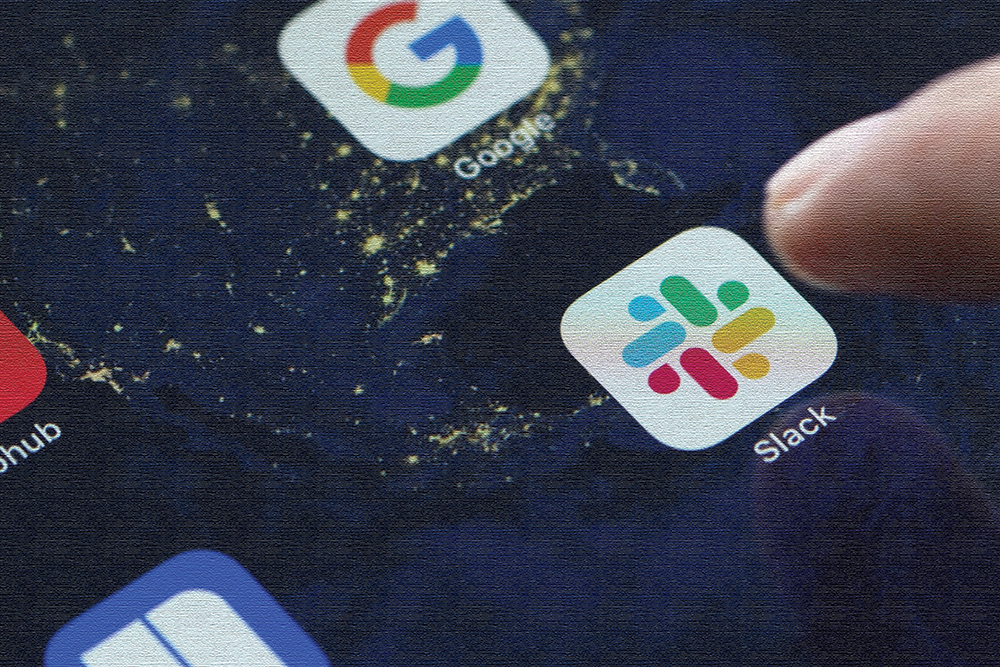
A quick scroll around any app library and you will find tons of applications that claim to maximise productivity. Any individual has plenty of room to switch around to see what works best for your needs. The same logic can apply to a corporate entity too but there is simply not enough room for trial and error here. A corporate workflow usually depends on more than just a few pegs to keep the larger machine maximising profits. Seeing how a lot of corporate decisions centre around maximising the bottom line plus-minus a few factors, every little step counts, especially when they are applied to scale.
Understandably, there is a significant overlap between personal productivity applications and their corporate cousins. Then again, the corporate software needs to have that extra layer of reliability and security as even the tiniest of glitches and security lapses can have a direct monetary impact, or worst, shut down an entire organisational function. There are still a significant number of developers working tirelessly to aid these cautionary corporates in their day-to-day functions, whether it be in maintaining communication or keeping tabs on expenses, and much else besides. These days, combining the one-touch functionality of personal smartphone apps into the corporate scape has been the trend, and here is our pick on the apps that we believe every corporate entity should look into.
Slack
Okay, Hear us out! Granted, no manager in their right mind would want there to be ‘slack’ under his management and why on earth would someone choose to call a communication platform ‘Slack’ is beyond us (we see you too, Discord!). Still, Slack remains to be one of the best and most sought-after business messaging apps. The messaging app ticks all the right boxes for it to be an ideal messaging platform for businesses. In fact, it is so customisable that should a business employ this application system wide in its default state, it would overwhelm the masses for sure! There are that many options to fiddle around with. Also, Slack integrates very well into a bunch of other enterprise-centred apps and reduces communication friction between teams. It’s not all rainbows and sunshine, though. There are two standout shortcomings here that need addressing: the price and call quality. Firstly, the app is the most expensive one in its category. Despite there being a free version, the enterprise version is almost too steep a bargain. Also, Slack is primarily a messaging app — a text-based messaging app. Hence, the audio and video call quality — serving their purpose in a pinch — wouldn’t be our go-to. That brings us to another enterprise level communication app.Zoom
As the pandemic came and is just about to leave, Zoom has become ubiquitous to video calling. Schools, colleges, artists and activists alike have been making the best of this video calling platform. If this were five years ago Skype would have been ruling this territory, but Skype ended up adding so many bells and whistles that it spectacularly failed in the one thing that Zoom excels at: video calling. Which is funny, because Oxford defines ‘Skype’ as video calling. It’s a verb! That’s how popular it was. Zoom does just video calls and it does that one thing really well. With an added premium paid one can hold a conference with hundreds of participants, and participants can come on-board by simply following a link at the pre-informed time. Artists have held concerts and comics have held entire stand-up routines on this platform — it’s that reliable. Perhaps the one drawback is the one-dimensional use case for this app, but then we thought of Skype and kept that criticism to ourselves.G-suite/ Google Workplace
One contender to Microsoft’s Office 365’s enterprise level service package is Google’s G-Suite, now known as Google Workplace. The bundle package offers enterprises and institutions with a suite of collaborative applications including word-processing software, email services, and cloud storage options. Simply put, Google Workplace is an upgrade to the host of Google apps that you would get with the run of the mill Google account. The service that charges $6 or $12 per user per month gives enterprises the opportunity to take much of their workplace to the cloud. With the growing popularity of the work-from-home culture, the ability to run desktop-class apps from their web-browsers from any device gives the employees a certain freedom that can’t really be found elsewhere. Microsoft also provides a similar deal with their Office 365 plans, but the user experience on Google’s offering is simply smoother across platforms. Elegant office tools, fine-tuned collaboration and revision tracking, and corporate friendly user management are Google Workplace’s strong-suits, but the apps remain online only and the offline editing on any platform requires some advance planning.Salesforce
While the applications thus far were more like exaggerated personal applications that could also ease workflows in the corporate world, Salesforce is one that is useless to the everyday Joe. Salesforce started off as a CRM company but later expanded into various other organisational functions. Sales Cloud, Salesforce Automation, Service Cloud, Marketing Cloud, Community Cloud, Einstein Analytics and so on are the company’s headlining products. Obviously, there is a degree of integration that comes with having all of these services coming out of one vendor, but at the same time this is not cheap at all. After all, this is marketed as a corporate tool, not for SMEs. The Sales Cloud alone can cost you up to $150 a month per user. The tall asking price will get you guided onboarding, account and contact management, opportunity monitoring, lead scoring and assignment, email and event tracking, customisable reports and dashboards, and mobile access. Should you be leaning into the cheaper plans, you might still want to consider Zoho CRM. Although, at the end of the day, Sales Cloud would still pack a mightier punch. As a corporate you can start off with one wing of Salesforce and work your way up the ladder to a full-blown integration. READ ALSO:
Published Date: July 29, 2022, 12:00 am
Post Comment
E-Magazine
RELATED Tech Talk


